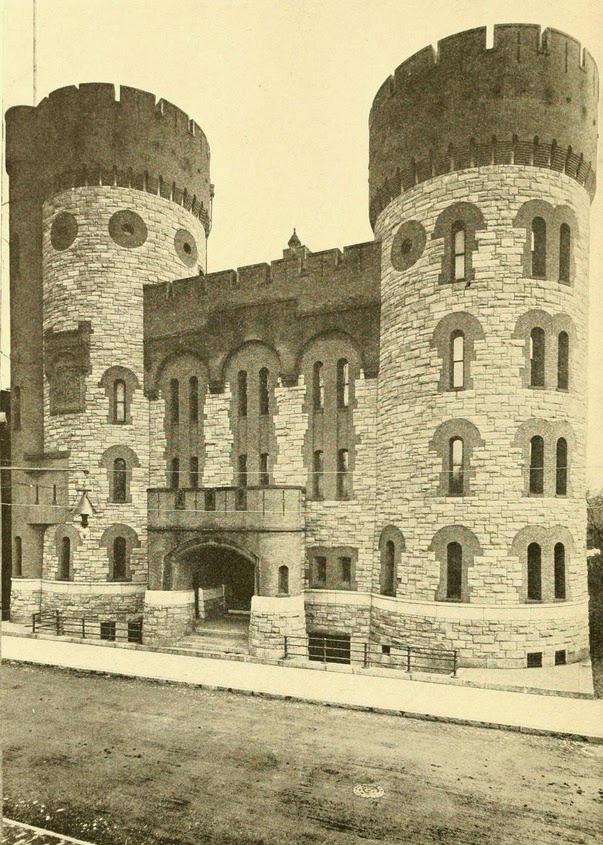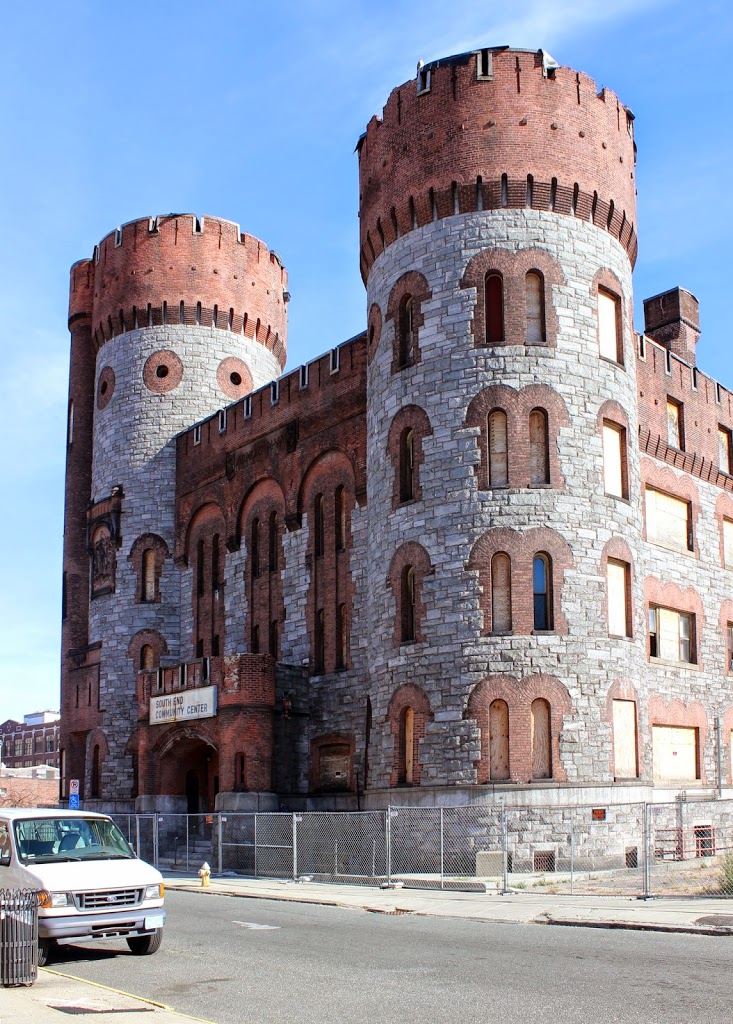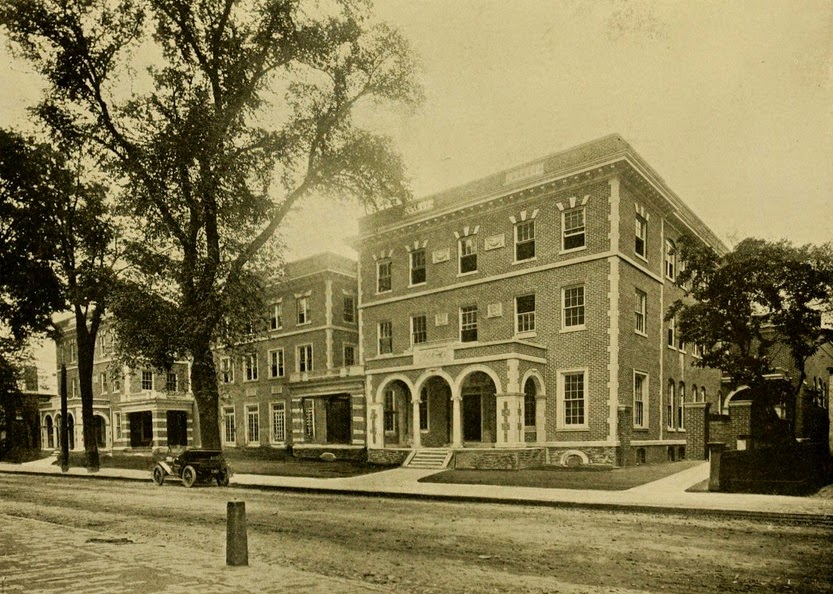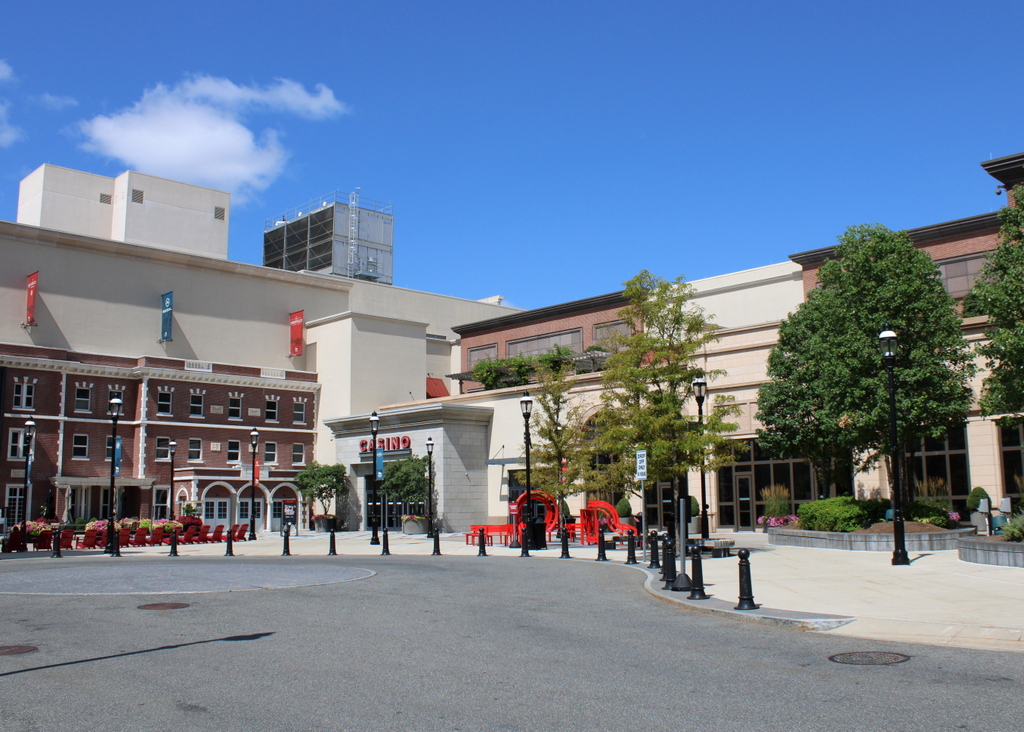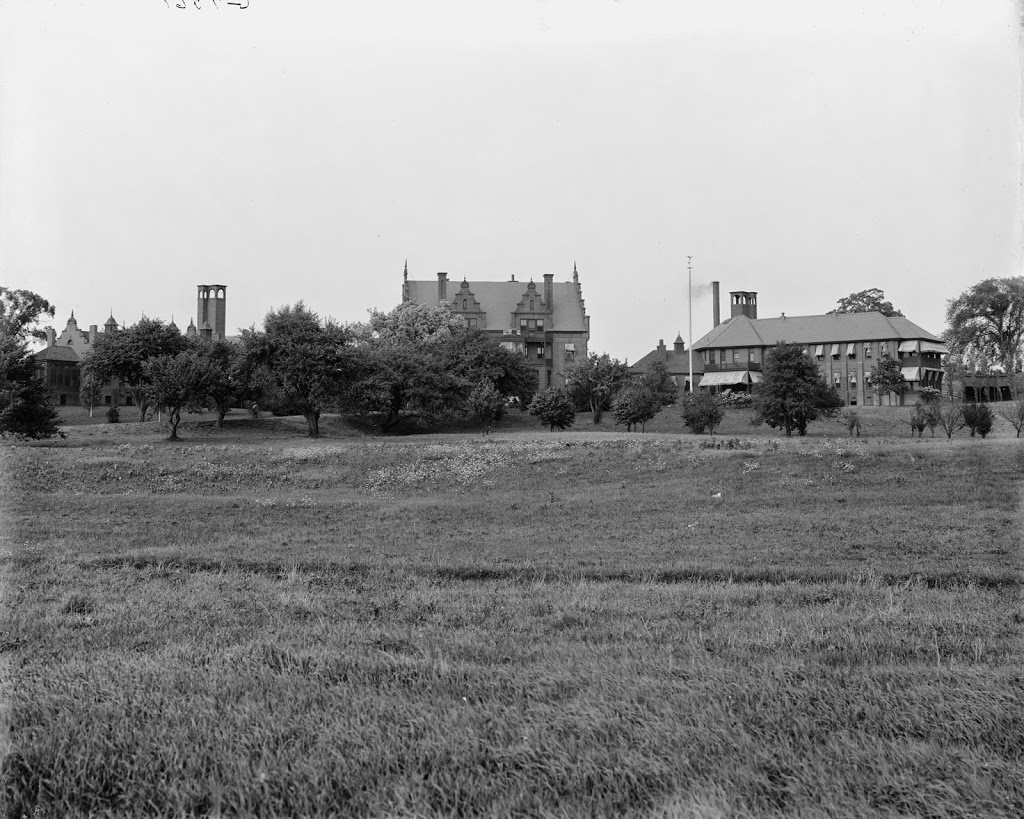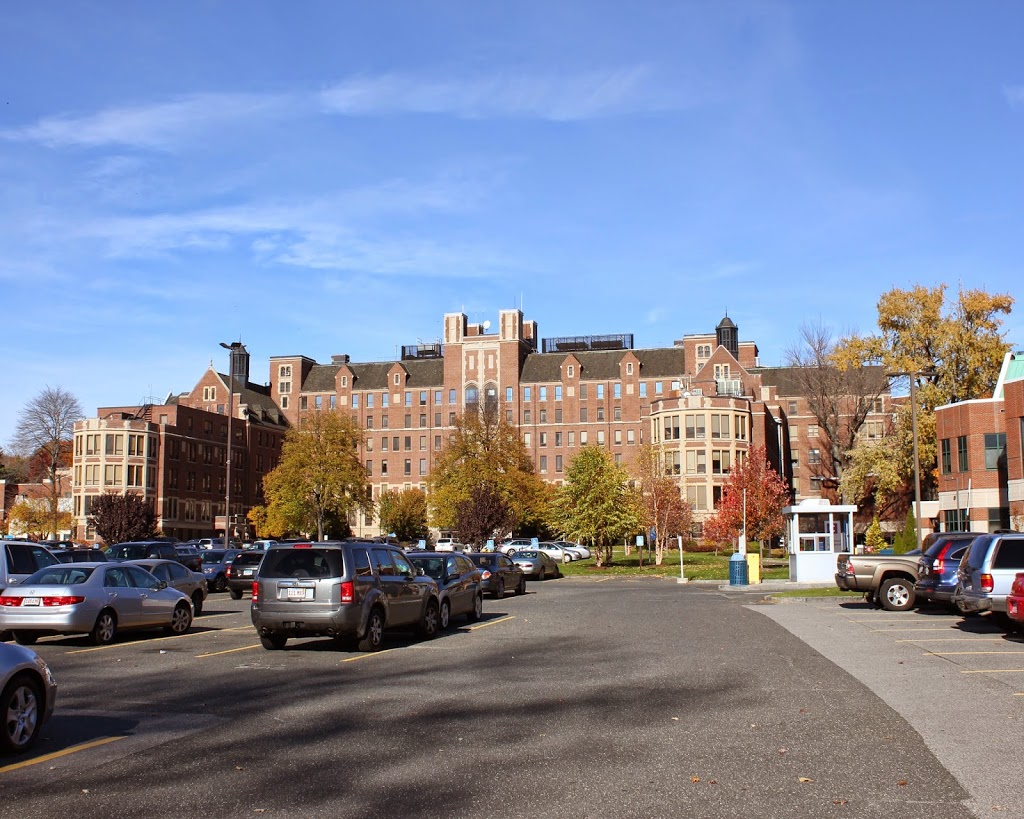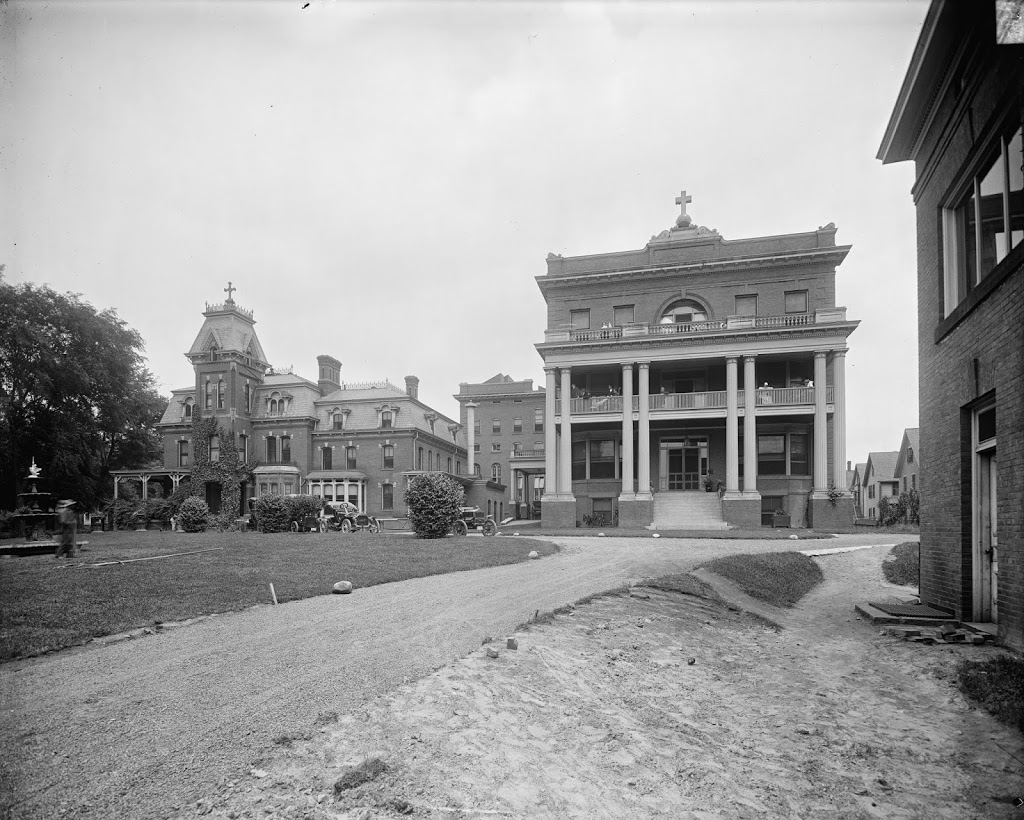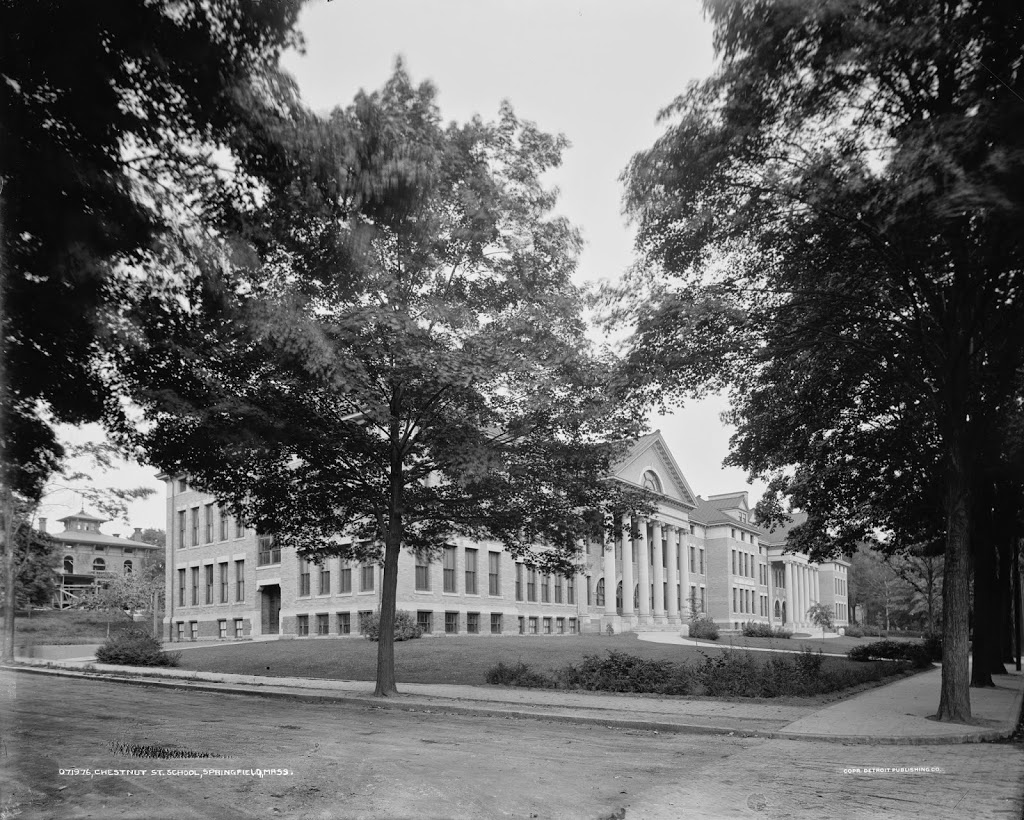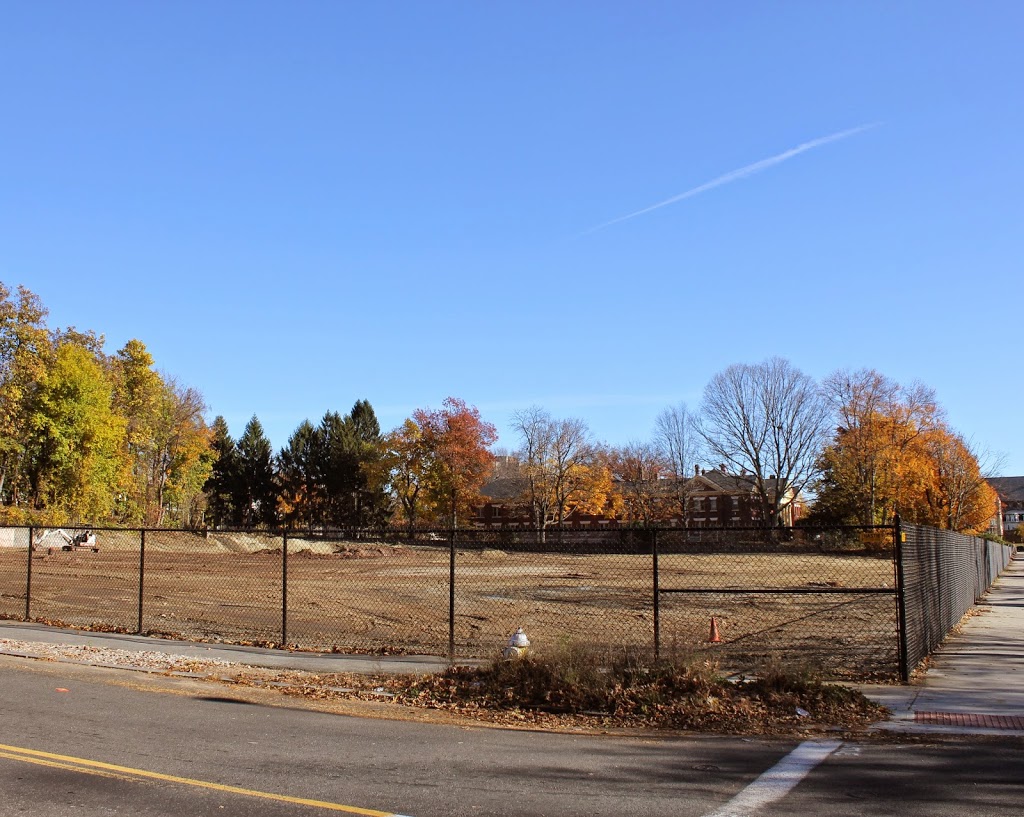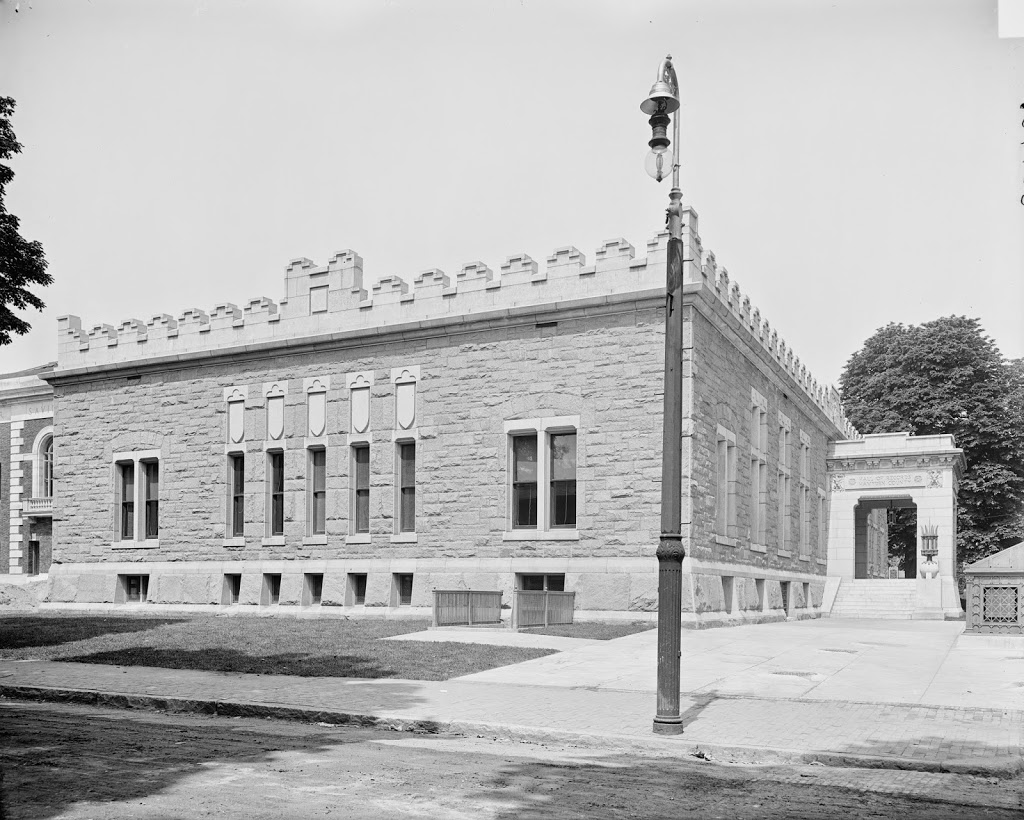The Armory on Howard Street in Springfield, around 1910. Photo from View Book of Springfield (1910).
The building in 2014:
The State Armory in Springfield (not to be confused with the much larger, more prominent federal Springfield Armory) was built in 1895 for the Massachusetts Militia, and later the Massachusetts National Guard. The building included both the castle-like structure facing Howard Street, as well as a massive drill shed that extended the width of the block to Union Street. After the National Guard left, it became the South End Community Center, but it sustained significant damage from the June 1, 2011 tornado, which completely destroyed the former drill shed. Like the former YWCA Building, the old Armory is right in the middle of the planned casino development, and the current plan is to demolish all but the facade, which will be incorporated into the casino.

